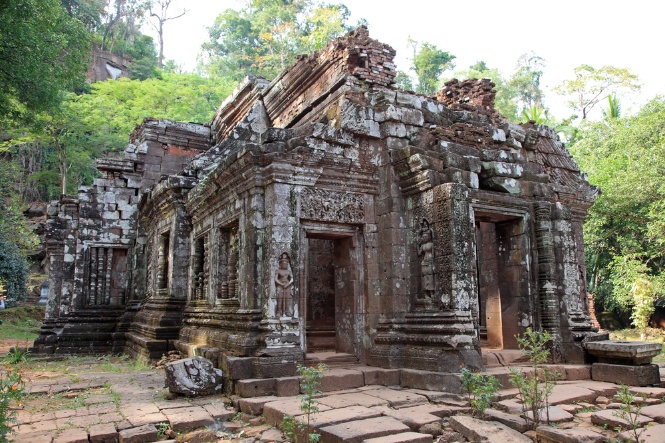Wat Phou
Wat Fu (meaning "mountain temple") is located on a hillside and offers stunning views of the surrounding area and the Mekong River. Visitors who value art and history will be amazed at the magnificent craftsmanship of this destroyed Khmer temple complex in the form of temple columns, sheds, lintels, pediments, terraces, courtyards, walls, doorways, a sanctuary, a temple, a library and palaces.
There is also a natural spring, which is believed by locals to emit holy water. Wat Fu was older than the world famous temple complex at Angkor Wat in Cambodia. In 2002, it was inscribed on the UNESCO World Heritage List.

Wat Phou is considered one of the oldest archaeological sites in Laos. One temple on the site was built around the 5th century, but most of the buildings found in the complex date back to 11-13 centuries. Like other famous Khmer architecture in Southeast Asia, it was built using sandstone, laterite and brick. Among the many prominent carvings are Indra, the Hindu god of war, storms and rainfall, riding a three-headed elephant and Vishnu on Garuda, an eagle.
Wat Phou (meaning "mountain temple") is located on a hillside and offers stunning views of the surrounding area and the Mekong River. Visitors who value art and history will be amazed at the magnificent craftsmanship of this destroyed Khmer temple complex in the form of temple columns, sheds, lintels, pediments, terraces, courtyards, walls, doorways, a sanctuary, a temple, a library and palaces.
There is also a natural spring, which is believed by locals to emit holy water. Wat Phou was older than the world famous temple complex at Angkor Wat in Cambodia. In 2002, it was inscribed on the UNESCO World Heritage List.

Wat Phou is considered one of the oldest archaeological sites in Laos. One temple on the site was built around the 5th century, but most of the buildings found in the complex date back to 11-13 centuries. Like other famous Khmer architecture in Southeast Asia, it was built using sandstone, laterite and brick. Among the many prominent carvings are Indra, the Hindu god of war, storms and rainfall, riding a three-headed elephant and Vishnu on Garuda, an eagle.
Opening hours: all year
Location: in Pakse, the main city of Champasak province in southwest Laos
Getting there: Visitors can travel to Wat Phu from Pakse by land or by boat along the Mekong River.

